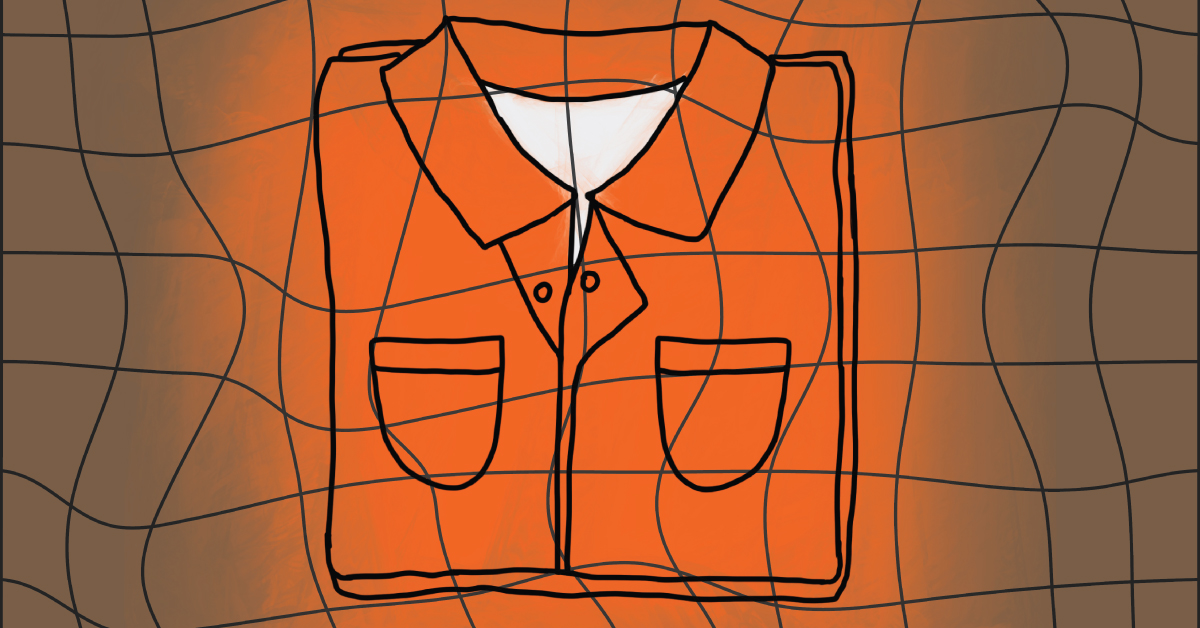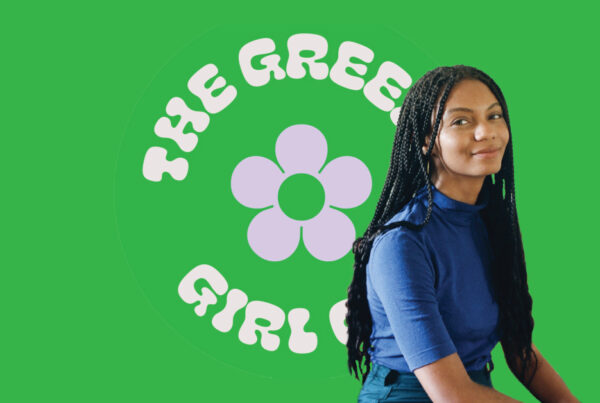Orange Is The New Black and the Reality of Incarcerated Queer Bodies
Orange Is The New Black was pretty groundbreaking when it first aired in 2013. I was sixteen at the time so it was pretty mind-blowing for someone whose only previous experience with queer women on screen was the wedding party scene in Rent. We probably wouldn’t have the strong LGBTQA+ representation in Killing Eve, Sense8, Euphoria, or even Brooklyn Nine-Nine if Orange Is The New Black hadn’t paved the way for queer and trans bodies in television.
While the show does touch upon serious and fact-based realities of prison life, it is still a romanticized narrative. (I’m sorry to burst your “giving head in the prison church” fantasy.) I offer you, instead, a brief look into the reality of queer and trans bodies in the carceral state.
PRISON AS A MICROCOSM
The prison system acts as a microcosm of American society; the structures of hegemony inform the way inmates understand their relationships to each other and their relationships to themselves. Basically, if you got called a dyke in your eighth-grade locker room for wearing cargo capris and an X-Files t-shirt, you’re probably going to be called a dyke by a prison guard.
The prison system is a result of the culture that created it. Interestingly, in the attempts to mirror the heteropatriarchal modes of society, oftentimes the prison sphere is forced to subvert them. This is seen in the results of gendering prisons (as in separating people into “male” and “female” prisons). By adhering to the gender binary and separating people who are perceived as men and women, we create microcosms that must adapt to meet the ideological patriarchy. Does that feel limiting to non-binary and trans folk and genuine queer love? Hell yeah! Carceral theory is mostly written by men, baby! Let’s see what we can make of it on our own.
INSTITUTIONAL HOMOSEXUALITY
What about the whole “only gay in prison” Lorna Morello subplot in Orange Is The New Black? Is it accurate? Theresa Severance would say so. In “The Prison Lesbian Revisited,” Theresa Severance writes, “Studies indicate that few women who participate in same-sex relationships identified themselves as lesbians prior to incarceration; rather, homosexuality in a women’s prison is viewed as ‘a sociological phenomenon and a subcultural adaptation to a specific situation’” (Severance 40). Therefore, the appearance of homosexuality within prisons cannot only be considered through a queer reading but must also be considered within the realms and conditions of prison itself. Severance goes on to state that “about 45% of the women in their sample had participated in some form of homosexual behavior while incarcerated” (40). Oftentimes, homosexual relationships in prison come from a place of loneliness, rather than a place of desire.
IN SHORT: Sexuality is fluid and bends to one’s immediate desires and needs. And often, desires and needs function differently in prison. Someone who has only engaged in straight sex with her beefy weight trainer, Grant, may test some queer waters while incarcerated. People need to chill with their “fake lesbian” labels and let people love who they love. Especially when it’s Natasha Lyonne.
NON-BINARY AND TRANS BODIES IN PRISON
The expectations of behavior in prisons are affected by the expectations of gender performance in society. In “Queering the Carceral,” Elias Walter Vitulli writes that “people housed in female prisons are expected to be passive, dependent, and emotional. Masculinity and gender-nonconformity in people in female prisons are often viewed as part of their delinquency” (Vitulli 117).
The failure of gender non-conforming and trans people to meet the expectations of femininity is seen as an act of aggression, one that is threatening to systemic structure. Not only is the performance of submissive femininity expected in the behavior of the inmates, it is also forced upon the appearance of the inmates. Vitulli writes that the prison provides “clothing that is feminine in its cut and also requires its prisoners to wear panties (and considers boxers to be contraband)” (Vitulli 118). He goes on the call this forced feminization, an act that removes the voice of trans and non-binary folk and physically forces them into hegemonic standards of womanhood.
IN SHORT: The division of female and male prisons does not account for the reality of the spectrum of gender identity and therefore many inmates do not fit the behavioral mold and are punished for it.
THE PUNISHMENT OF THE QUEER AND NON-BINARY
Trans and non-binary people, as well as the butch lesbian, are punished not only for their legal crimes but also for their societal transgressions. They are punished for the perceived threat they place on heteronormative and patriarchal society or, as we often hear in the media, “the traditional American family’s virtues.” In “It’s About This: Lesbians, Prisons, and Desire,” Jenni Millbank discusses the legal implications of this punishment on queer incarcerated bodies. She writes that there is a “very high proportion of lesbians on death row in the US” (Millbank 17). She also states that there are strong links between the depiction of these women as man-hated and violent and their disproportionate guilty sentences in the justice system.
IN SHORT: Grown men are scared of queer and trans folk. That’s why a lot of us work in haunted houses. “But Emily,” you say, “queer and non-binary folk are some of the most vulnerable members of society. How would we threaten the safety of a group of people who literally have all the power in this situation?” Good question. That’s some big brain thinking right there. Guess we are just real spooky.
THE RACIALIZED REALITY OF MASS INCARCERATION
While the crux of this article is on the policing of queer and trans bodies, it would be remiss to not emphasize that the great majority of these queer and trans bodies are also people of color. The American carceral state is deeply flawed and inherently racist. In The New Jim Crow, Michelle Alexander vocalizes an argument that mass incarceration has become the new Jim Crow within the United States, particularly within the way it separates and limits the rights of incarcerated black people. Alexander argues that black people have historically been exposed to “systems of control” that subdue and limit the rights and lives of black people. These systems began in slavery, moved through the Jim Crow laws of segregation, and have now reemerged in mass incarceration (Alexander 22). The reality is that black people are incarcerated in state prisons at over five times the rate of white people. This disproportionate imprisonment is also inflicted upon Lantinx and Indigenious bodies.
Truly, an entire article is owed to the racial injustices of mass incarceration; however, for now I will leave you with some great resources to continue the discussion.
CALL TO ACTION
Upset by what you read? I am too! Here are some great resources for ways you can educate yourself on and advocate for the most vulnerable members of our society:
- Read Are Prisons Obsolete? by Angela Y. Davis, Women in Prison: How We Are by Assata Shakur, The New Jim Crow by Michelle Alexander, Just Mercy by Bryan Stevenson, and Golden Gulag by Ruth Wilson Gilmore.
- Watch 13TH, Just Mercy, and Out of State.
- Help wrongfully-convicted women receive legal justice by donating here.
- Donate to The Women’s Prison Book Project to give resources and literature to the incarcerated.
- Donate to Color of Change, an organization fighting for wrongfully imprisoned black people.
- Donate to The Transgender Law Center, which fights against abuse of trans and gender non-conforming inmates in prisons.
- Donate to Black and Pink, a national prison abolitionist organization dedicated to liberating LGBTQIA2S+ people and people living with HIV/AIDS.

–Emily Powers, Content Creator






